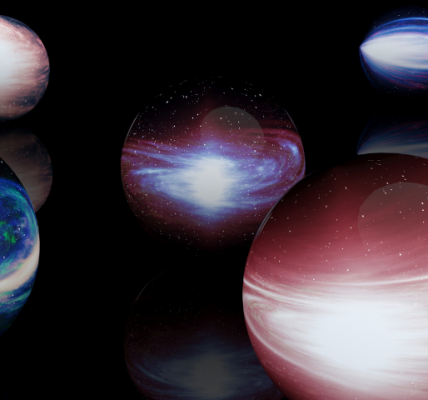Getting outside for stargazing during the warm months is easier than ever—with a little help from an app on your phone. The Astronomy app for Android and iPhone will show you what, where, and when to look for constellations, planets, star clusters, and galaxies.
This month, you will have a chance to see some fascinating space phenomena from the comfort of your backyard. On May 10th, the Moon and Saturn will be close together, with the bright planet positioned next to a thin sliver of a crescent moon. Although Saturn is a long way off (about 1,400 times farther from Earth than the Moon), you will still be able to see its stunning rings against its bright, yellowish-colored surface. (The rings are what gives Saturn its distinctive look.)
The May night sky looks like it is going to produce a great show for spectators. The first quarter moon will be visible in the western sky around sunset, and by midnight, the first quarter moon will be high in the sky. Mercury, the brightest star of our solar system, is in the eastern sky. The moon will be visible in the morning from northeast to southwest.
Lunar Eclipse – 15th of May
As the moon moves into its darkest phase and day turns into night, it is tempting to remain indoors and away from the cold. But May 15th, 2022, will be a beautiful night to go outside and witness the amazing view, and enjoy the wonder of the “greatest eclipse of the sun in 78 years.”
On May 15th, 2022, the moon, and its shadow (called the umbra) will sweep across the continental United States (and parts of Canada and Mexico) during a rare total solar eclipse. When the moon covers the sun, Totality will last for 2 minutes and 40 seconds. This will be the 8th total solar eclipse to be visible in the continental United States in this century.
η-Lyrid Meteor Shower – 8th of May
The Lyrid meteor shower is the little sister to the more famous Eta Aquarid meteor shower, which is more well-known for its annual display. The Lyrids, though, peak on the night of May 8, 2022. The Lyrids are expected to produce no more than 20 meteors per hour this year, so viewing conditions should be excellent for those who want to see them in all their glory.
The η-Lyrid Meteor Shower begins on May 8, 2022, and the reason we call it the η-Lyrid is that its radiant is in the constellation Lyra, which is Latin for “lyre.” The meteors in this shower are debris from the comet 2P/Encke, which was first spotted in 1858. The η-Lyrid Meteor Shower is one of the more abundant meteor showers, and it produces up to 20 meteors per hour at its peak.
It is produced by debris left behind by comet Thatcher 1. Since this year’s shower is expected to peak in the early morning of May 8, it is an excellent meteor shower to observe. Most meteor showers last from morning to evening, but η-Lyrid meteors will peak in the early morning hours.
So if you are a lover of the night sky and spend endless hours looking up at the stars, then May will be the best month for you to observe the universe in all its glory.





